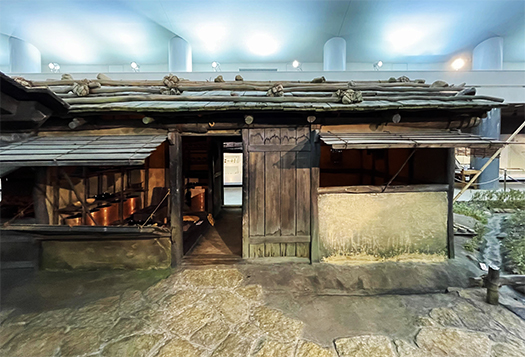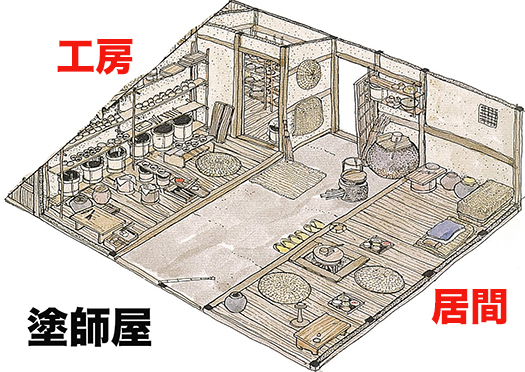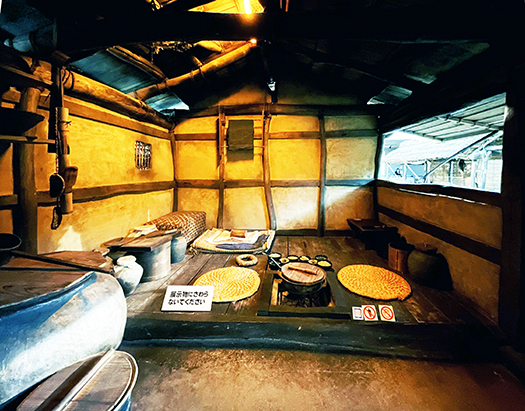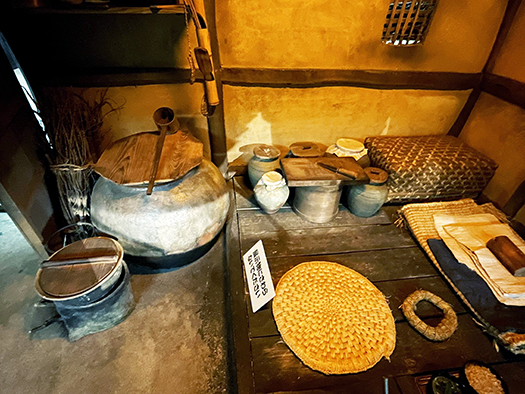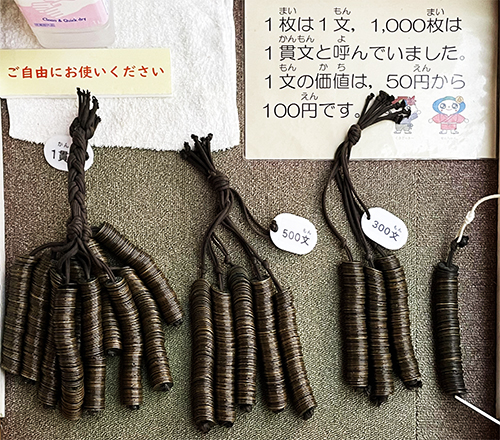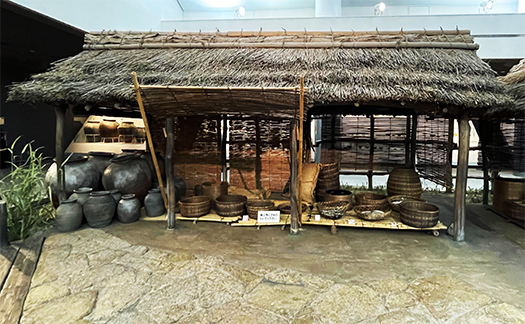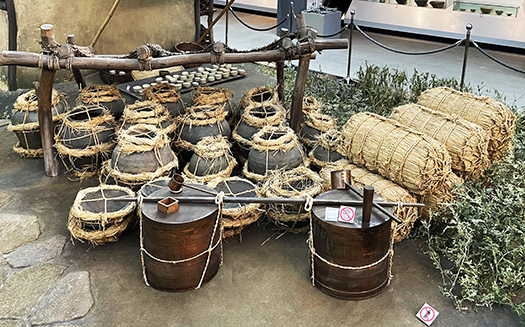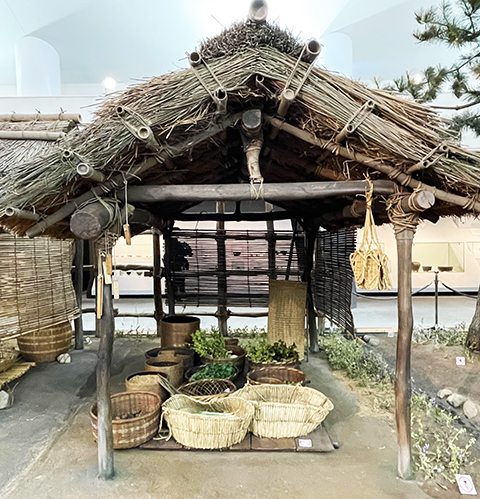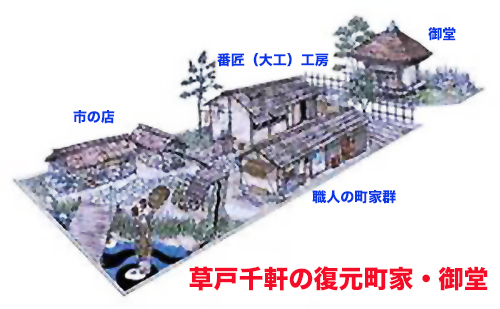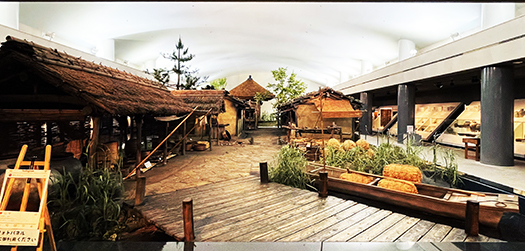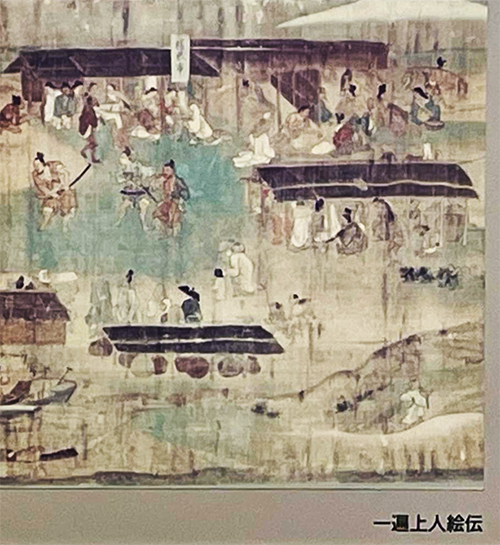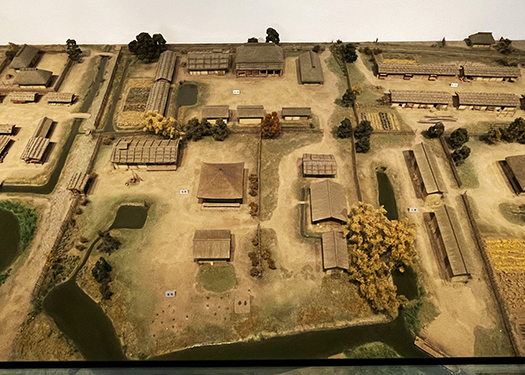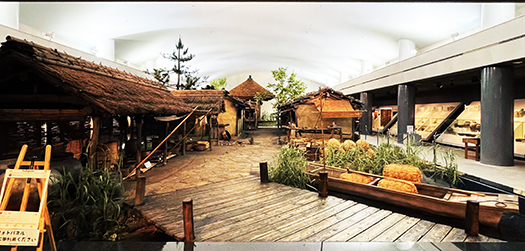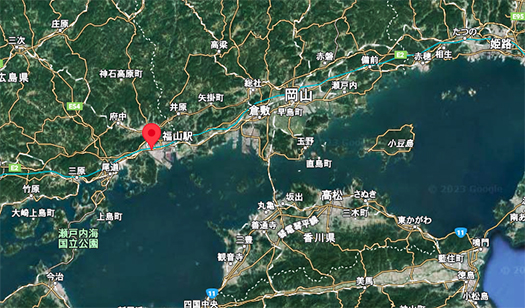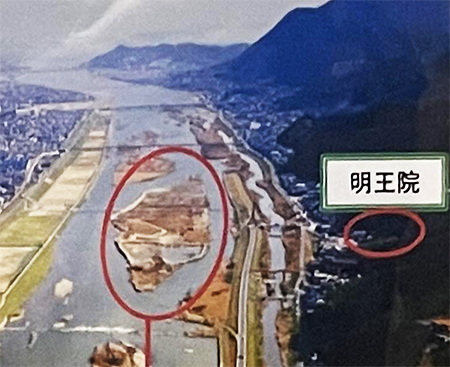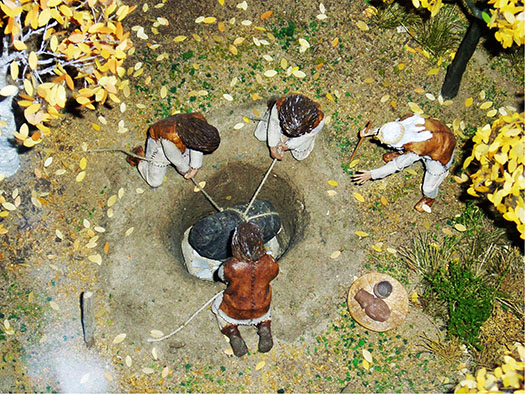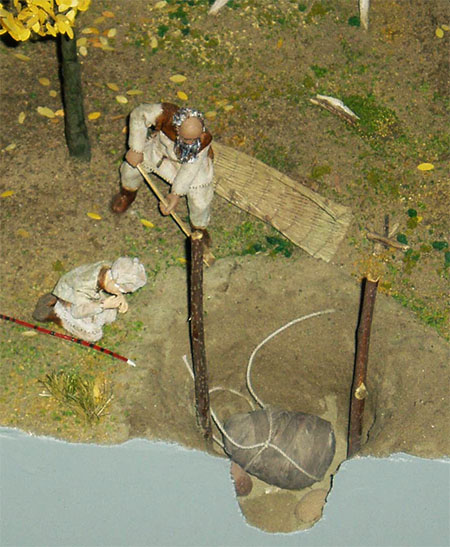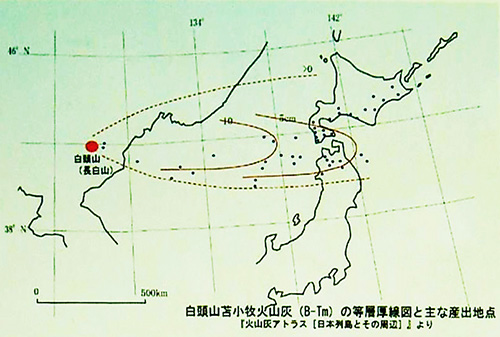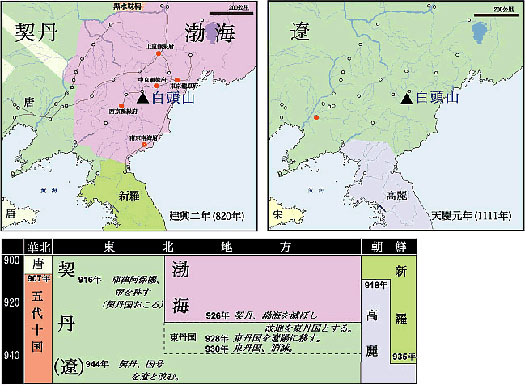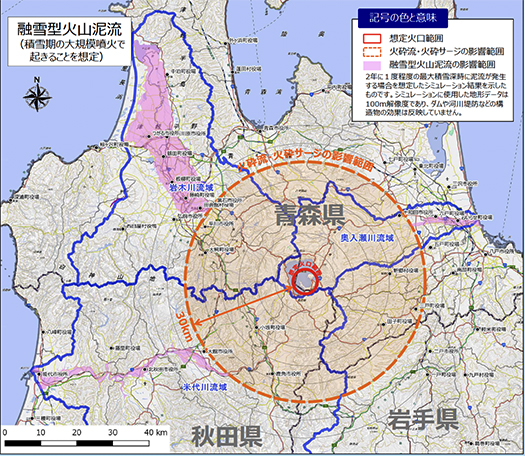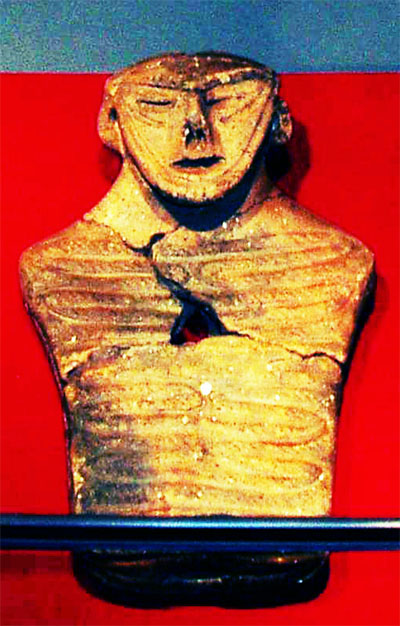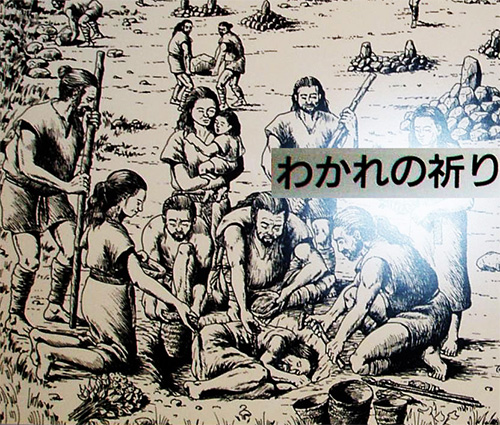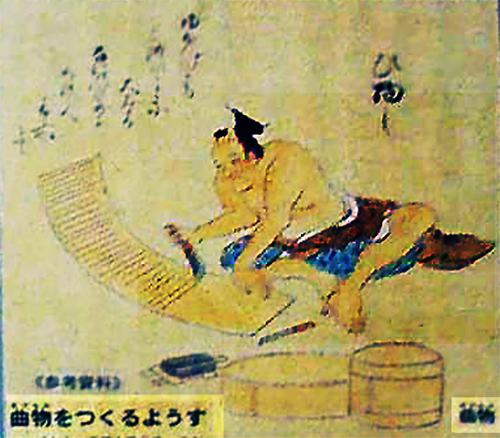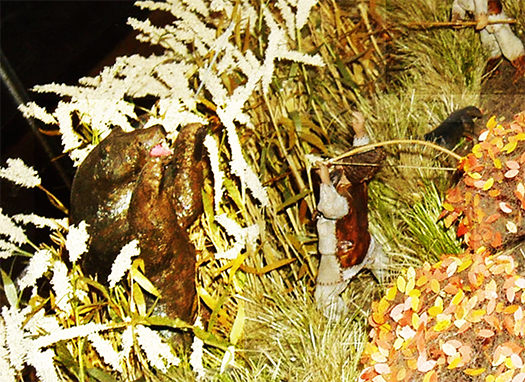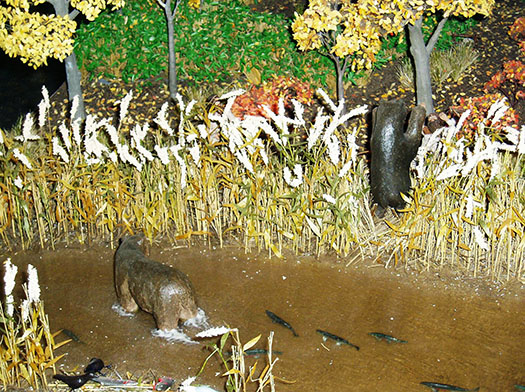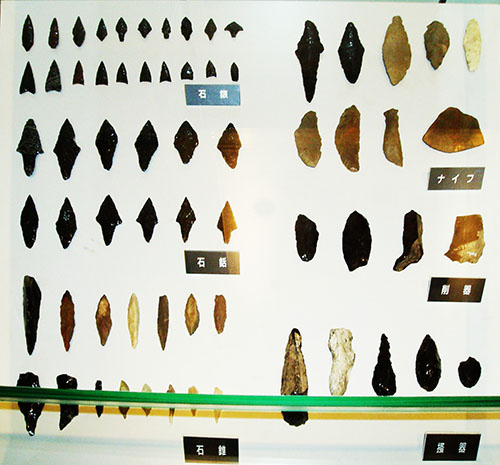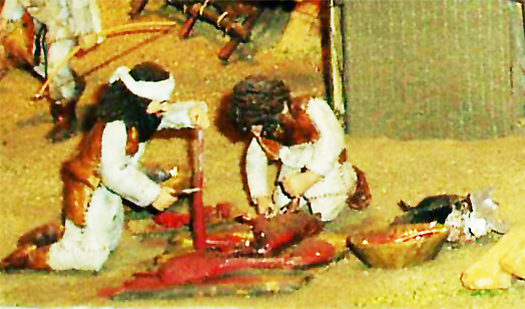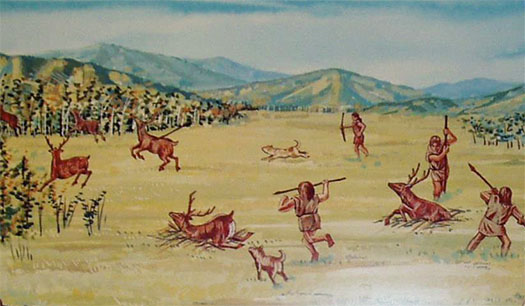
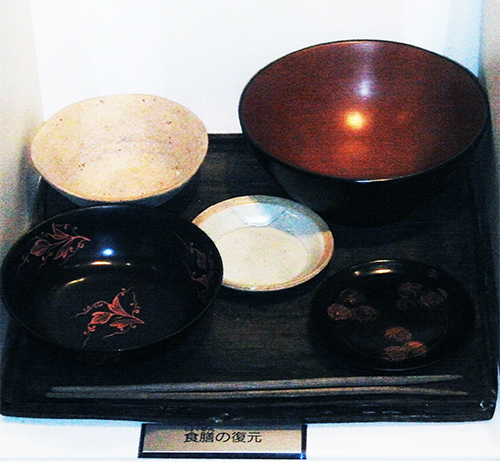
昨日に引き続き初源期の「商工」事業者の草戸千軒遺跡での活動ぶり。ものづくりの基本は生活をよりよくする目的。そのなかでも食生活を彩る食器は基本中の基本。石器時代には石の皿などが使われていましたが、定住が日本列島で始まった縄文以来、木の国の社会として漆は木製品加工に活用された。
以下Wikiの記述引用。〜古くは縄文時代から漆を使用し、現在に至るまで連綿と多くの漆器が存在する。漆器は中国発祥で技術は漆木と共に大陸から日本へ伝わったと従来考えられていた。ところが北海道函館市南茅部で出土した漆の装飾品6点が、米国での放射性炭素年代測定により7400年前とされる中国を大幅に遡る約9000年前(縄文時代早期前半)の装飾品と確認された。さらに福井・鳥浜貝塚出土の漆の枝木は分析の結果、世界最古の約1万2600年前(縄文時代草創期)と確認・証明された。(中略)こういった遺構、遺品から日本では縄文時代草創期にはすでにウルシを生育していたと考えられている。〜
漆器のことを英語ではJAPANというのだそうですが、これは漆器が日本特有の工芸品だと世界が認めているということ。和の食材を載せる容器として、漆製品は民族のシルシとも言えるのでしょう。木製品はそのままでは食材の水分が浸透してしまい、手近に入手できる木製品に対しての「防水」加工として、これも樹液から得られる漆に着目した先人に深く感謝したい。木を扱う技術伝統の深さを思わされる。
この草戸千軒遺跡の復元住居兼用工房展示でも、まずはこうした職人・工業に注目したのは素晴らしいと感動します。

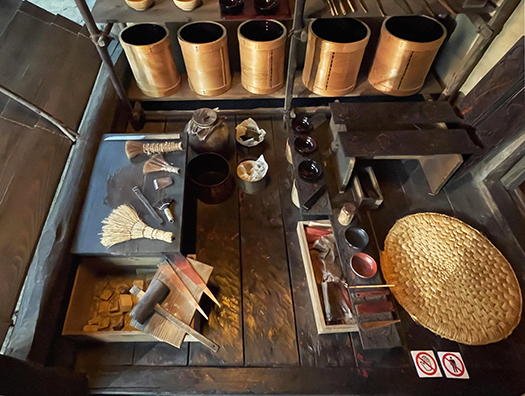
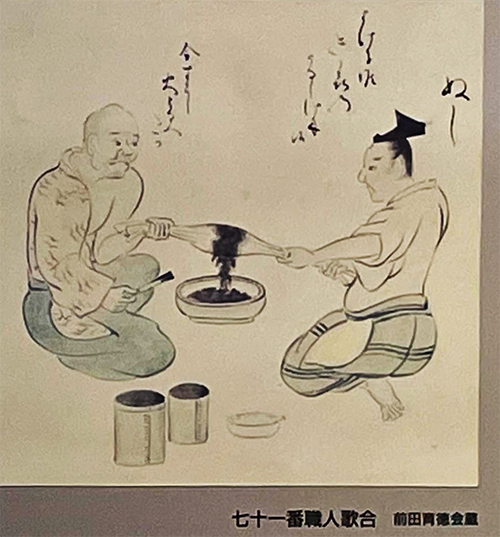
そしてこの製品流通の最適地で塗師という職工人が存在したことも興味深い。原材料としての漆・漆木はたぶん遠い生産地だったに違いない。この中州立地の草戸千軒の芦田川上流の山岳地帯で採取された漆が河川交通でここまで運送されてきたものだろう。地縁血縁での信頼関係に基づいた結びつきも想定される。もうひとつの原材料である木製品は、この遺跡展示でも番匠(大工)の作事場が復元されているように、その周辺的技術として職方・工人が存在したに違いない。分業構造の「製造業」集積、イマドキの言葉で言えば見事にサプライチェーンが成立していた。
整理整頓された作業場の復元ジオラマから、仕事の段取りの様子までもが伝わってくる。加工された漆器は乾燥させる目的で棚に整頓され、作業場では各種道具類が床に並べられ、塗装の漆が収納された容器群は作業場右の棚にきちんと整頓されている。機能的な空間美の世界。
そのように製造生産された漆器は、芦田川河口域から瀬戸内海交易圏に商品として出荷されて、京大阪の市場に投入されていったものだろうか。こうした瀬戸内海交易の世界が、源平期には平家の財政基盤として機能し、戦国期には反織田勢力の基盤にもなっていたのではないか。
民の日々の暮らしから社会構造の基盤要素がくっきりと浮かび上がってくる。
English version⬇
Handicrafts since the Jomon period / Lacquerware House 2 – Kusado-Senken 2023 Revisited-6
Lacquerware is called JAPAN in the world. It is a tradition since the Jomon period, created in the land of wood. With the increase of social productive power, it became a handicraft industry. …
Continuing from yesterday, how “commercial and industrial” businesses of the Hatsugen period were active at the Kusado-Senken site. The basic purpose of monozukuri is to improve our lives. Among them, tableware that decorates our eating habits is the most basic of all. In the Stone Age, stone plates and other such items were used, but since the Jomon, when settlement began in the Japanese archipelago, lacquer was utilized in the processing of wood products as a society in the land of trees.
The following is a quote from Wiki’s description. 〜Lacquer has been used since the Jomon period, and many types of lacquerware have existed continuously until the present day. Lacquerware is thought to have originated in China, and the technique was thought to have been introduced to Japan from the continent along with lacquer wood. However, radiocarbon dating in the United States of America has confirmed that six pieces of lacquer decoration excavated in Minamikayabe, Hakodate, Hokkaido, date back approximately 9,000 years (the first half of the Early Jomon Period), well beyond the 7400-year-old Chinese date. Furthermore, analysis of a lacquer tree branch excavated from the Torihama Shell Midden in Fukui Prefecture has confirmed and proven that it is the oldest in the world, dating back to approximately 12,600 years ago (the early Jomon Period). (Based on these remains and artifacts, it is believed that poison oak was already growing in Japan during the early Jomon Period. ~.
In English, lacquerware is called JAPAN, which means that the world recognizes lacquerware as a craft unique to Japan. As containers for placing Japanese foodstuffs, lacquerware products can be said to be the shirushi of a people. Wooden products, as they are, allow moisture from foodstuffs to permeate through them. As a “waterproof” treatment for wooden products that are readily available, I would like to express my deep appreciation to our predecessors who focused on lacquer, which is also obtained from sap. It reminds us of the depth of the technological tradition of handling wood.
It is wonderful and impressive that the restored dwelling and workshop exhibit at this Kusado-Senken site also focused on these craftsmen and industries first.
It is also interesting to note the existence of a craftsman named Nurishi in this optimal location for product distribution. Lacquer and lacquer wood as raw materials were probably produced far away. Lacquer collected in the mountainous area upstream of the Ashida River in Kusado-Senken, the location of this chuzu, must have been transported here by river transportation. It is also assumed that there is a relationship of trust based on geographical and blood ties. Wooden products, another raw material, must have been a peripheral skill of artisans and craftsmen, as shown by the reconstruction of the workshop of a bansho (carpenter) in the exhibition at the site. The “manufacturing” accumulation of the division of labor structure, or in modern terms, the supply chain, was splendidly established.
A restored diorama of a well-organized workshop conveys even the arrangement of work. The processed lacquerware is arranged on shelves for drying, various tools are laid out on the floor in the workshop, and the containers of lacquer for painting are neatly arranged on the shelves to the right of the workshop. A world of functional spatial beauty.
The lacquerware produced in this way was probably shipped from the Ashida River estuary to the Seto Inland Sea trading area to be sold in the Kyoto-Osaka market. This Seto Inland Sea trading world may have served as the financial foundation for the Heike clan during the Gempei period and as the basis for the anti-Oda forces during the Sengoku period.
The daily life of the people clearly reveals the basic elements of the social structure.
Posted on 12月 18th, 2023 by 三木 奎吾
Filed under: 住宅マーケティング, 日本社会・文化研究 | No Comments »


